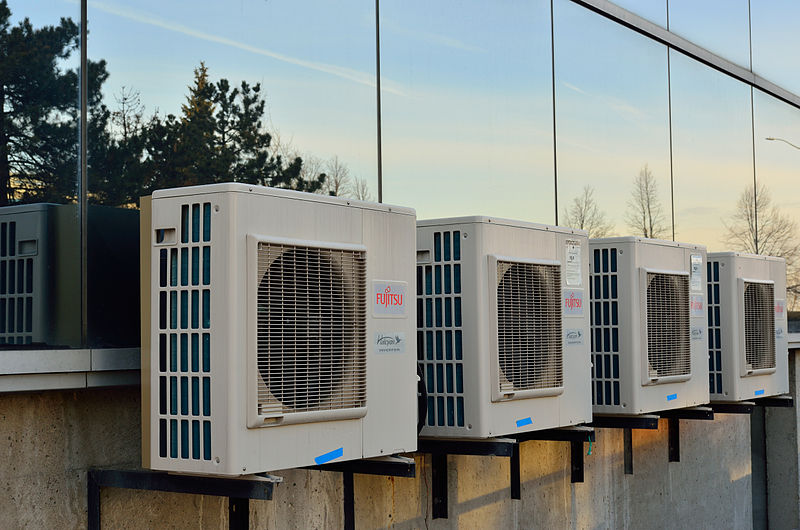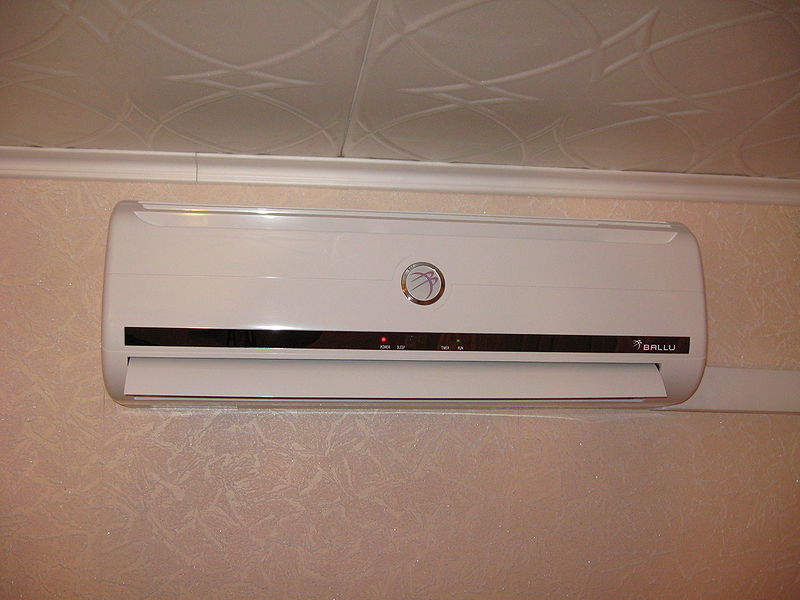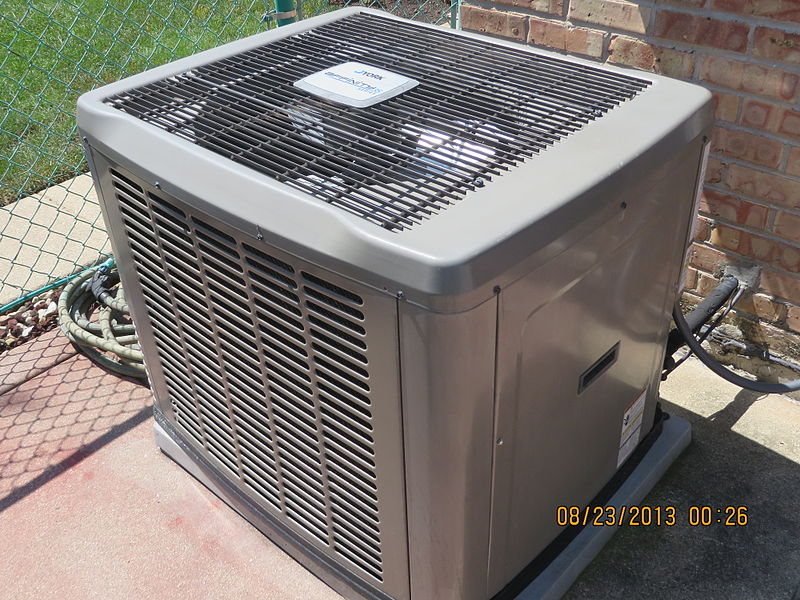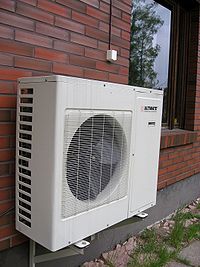Types of Air Conditioning systems: Window, split, packaged and central
Before we get into the different types of air-conditioning, let’s establish what Air-conditioning is.
An air-conditioning system or also known as a standalone air conditioner provides cooling and humidity control for all parts of a building. Air conditioned buildings often have sealed windows, if windows are left open this would work against the systems which are intended to maintain constant indoor air conditions. The fresh air from outside generally draws into the system by a vent into the indoor heat exchanger section, creating positive air pressure.
Different types of Air- conditioning systems
1. Ductless Mini Split Air Conditioners
A Ductless, mini split-system air-conditioner has numerous potential applications in residential, commercial and institutional buildings. The most common one of all the applications is the multifamily housing, or as a retrofit add-on to house “non-ducted” heating systems, such as hydronic (hot water), radiant panels and space heaters. They are also a good choice for room additions and small apartments, where extending or installing distribution ductwork (central air-conditioner or heating system) is not feasible.

What are the Advantages
The main advantages of the mini splits are that they are small in size and have flexibility for zoning or heating and cooling individual rooms. Most models can have up to four indoor air handling units (four zones or rooms) connected to one outdoor unit. This number depends on how much heating and cooling is required for the building or each zone (this depends on how well the building is insulated). Each zone then has its own thermostat, so that means that you would only need to condition that particular space when it is conditioned. Which therefore means – SAVING ENERGY = SAVING MONEY
These units are easy to install, they hook up to the outdoor and indoor units, this generally requires a three inch (± 8cm) hole through a wall of the conduit. Most manufacturers of this type of system can provide a variety of lengths of connecting conduits. Therefore you can locate the outdoor unit as far away as 50 feet (± 15meters) from the indoor evaporator. This makes it possible to cool rooms on the front side of a building or house with the compressor in a more advantageous or inconspicuous place on the outside of the building.
What are the Disadvantages:
The primary disadvantage of a mini split is their cost – some systems cost between R19,500 – R 20,000. This is about 30% more than central systems (excluding ductwork) and may cost twice as much as window units of similar capacity.
The installer then needs to also correctly size each indoor unit and judge the best location for its installation. Over-sized or incorrectly located air-handlers often result in short-cycling, which wastes energy and does not provide proper temperature or humidity control. Too large a system is also expensive to buy or operate.
2. The split air-conditioner
The split air conditioning has at least one unit that sits inside your room. The compressor sits outside of the room – sometimes on the ground or on a bracket that hangs on the wall. Most models come with multiple indoor units, where you use one single compressor, this is known as the multi-split air conditioning system.
A split air conditioner consists of two main parts: The outdoor unit and the indoor unit.
The outdoor unit is installed on or near a wall outside of the room or space you wish to cool. The unit houses the compressor, condenser coil and the expansion coil or the capillary tube. This sleek-looking indoor unit contains the cooling coil, a long blower and an air filter.

3. Central air-conditioner
The central air-conditioner is a method of structural cooling in which a centralised unit cools and dehumidifies air before circulating it throughout the building. This is known as a direct contrast with systems that rely on individual units in rooms or suites of rooms. Central air is also bundled with a heating system. They both rely on similar amounts of electrical power and ductwork to distribute cooled or heated air. This type of air-conditioning is usually found in large structures or in homes that are in extremely hot or humid climates.
In the central air, the main unit is often located outdoors or in an isolated area of the building because a great deal of noise is generated during the refrigeration cycles that cool the air and help to extract humidity. Each unit connects to the ductwork that runs throughout the building with blowers pushing cold air out of the ducts to cool down rooms. This air conditioner also vents to the outdoors to get rid of excess heat and moisture.

4. Window AC
Unlike the Central Air, the Window AC units cool specific spaces or rooms at a time. They are more energy efficient as they don’t run throughout the house constantly, and you can focus on the areas that need to be cooled instead of cooling your whole home.
The window air unit is installed in an open window. Interior air is cooled as a fan blows it over the evaporator. On the exterior, the heat drawn from the interior is dissipated into the environment as a second fan blows outside air over the condenser. Large house or buildings could have several such units, requiring each room to be cooled separately.
A window air conditioner is also referred to as a room air conditioner. This is the simplest form of an air conditioning system that is mounted on the windows or walls.

Difference between a Split and Window AC
Window AC and Split AC,both work on the same principal, but they have different capacities. Both are used for different places.
A split AC, divided into two parts, thus has a large capacity, therefore making it ideal for large offices and big rooms. When looking at the window AC this is one unit, this is suitable for a small room only. Window AC creates noise and the split unit is calmer. The Window AC is smaller that the Split AC.
The Window AC is easy to install whereas the Split AC needs to be connected to the exterior and interior unit through rubber tubes and this also may cause trouble.
If you are wanting to install a window AC, a window is required, but should you want to install a split AC, the interior would need to be connected to a small hole in the wall.
When relocating the Window AC is a good choice as it does not need to be installed by a professional.
In conclusion, both units work on the same principles, the split AC is ideal for large space, as they have more capacity and Window AC is an ideal choice for a small room. Additionally, a split AC would need to be installed by a professional and a window AC can be installed by you and me.
If you are interested in becoming one of our subscribers, please visit our website.
To view notes with screenshots on how to use our website, please visit our Wiki site.
To view more articles, please visit our blog.
About Audene Harris
I started working at Leads 2 Business in August 2014 in the Telesales Department as an Accounts Co-coordinator. I am extremely privileged to be apart of a dynamic Sales team and an empowering Company. I am a very out-going person with many characteristics, and love to help when a client needs any assistance.









Leave a Reply